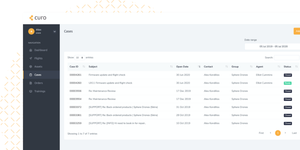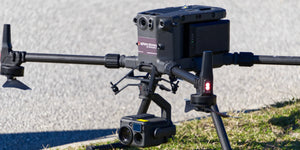DJI recently added to its Mavic 2 Enterprise line with the Mavic 2 Enterprise Advanced, featuring new and improved sensors, support for RTK precision, and Smart Controller compatibility. Let’s look at the Zoom, Dual, and Advanced differences to help you with your purchasing decision.
Visual cameras
The Mavic 2 Enterprise Zoom and Dual are both equipped with the same 1/2.3″ CMOS sensor capable of capturing 12 MP stills and 4k 30 fps videos. The Zoom variant has 2x optical zoom and 3x digital zoom, where the Dual variant only has 4x digital zoom.
The Mavic 2 Enterprise Advanced improves upon this with a larger 1/2″ CMOS sensor capable of capturing 12 MP and 48 MP stills and 4k 60 fps videos. The larger sensor also allows for up to 4x optical zoom and up to 32x digital zoom. The camera also performs much better in low-light settings and captures more detail.
Thermal cameras
The Zoom variant of the Mavic 2 Enterprise doesn’t have a thermal camera. The Mavic 2 Enterprise Dual has a 160 x 120 9Hz non-radiometric thermal camera capable of detecting the sensor’s temperature range. Photos captured by the thermal sensor are saved in JPEG format.
The improved Mavic 2 Enterprise Advanced ups the sensor resolution to 640 x 512 30Hz radiometric sensor with improved clarity that can read the exact temperature of an object in the frame down to a single pixel, making it much more useful. The images captured are captured in R-JPEG format.
RTK support
A significant addition the Mavic 2 Enterprise Advanced brings to the table is RTK support. An RTK module can now be purchased separately and added to the drone to improve accuracy data for inspections or surveying jobs. Along with this, up to 240 waypoints can be defined for a single job compared to the 99 the Zoom and Dual allowed.
Core flight characteristics
Across all the Mavic 2 Enterprise models, DJI has managed to keep the core flight characteristics identical. All have a maximum flight time of 31 minutes and a maximum transmission distance of up to 10 kilometers. The drones can fly in temperatures down to -10°C to 40°C and have omnidirectional obstacle avoidance sensors.
All can fly at speeds of up to 72 kilometers per hour in sports mode without any wind and up to 50 kilometers per hour in standard mode. The Mavic 2 Enterprise can ascend at a maximum speed of six meters per second and descend at five meters per second.
Accessories
All of the Mavic 2 Enterprise drones are compatible with the spotlight, speaker, and beacon modules. Only the Mavic 2 Enterprise Advanced is compatible with the new RTK module. All are can be used with DJI’s Smart Controller, removing the need for a mobile device to fly the drone.
Pricing
The Mavic 2 Enterprise Zoom is the cheapest of the lineup at $3,299, while the Enterprise Dual comes in at $4,529, and the newly released Enterprise Advanced comes in at $9,099, a huge jump from the older models but reasonably competitive for the features and support your receive. Compared to the much more expensive Matrice 200/300 series and the XT2 payload at $40,000+, it is a steal, especially with the portability.





















